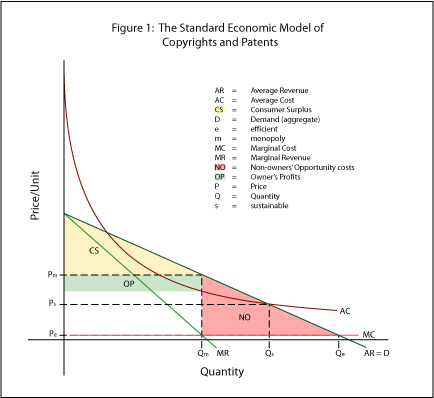
This portrayal of the standard model comes largely from Christopher S. Yoo's brilliant paper, Copyright and Product Differentiation, 79 N.Y.U. Law Rev. 212, 227 fig. 1 (2004) [PDF]. Yoo's paper both sums up the traditional view among legal academics of the economics of copyrights (a view which, at this level of generality, applies as well to patents) and corrects it by setting the proper bounds for measuring profit. I've modestly amended Yoo's version by showing average costs to exceed average revenue at low levels of production—an assumption that, while not strictly necessary, doubtless does a better job of describing most copyrighted works.
More interestingly, Yoo's paper criticizes the standard model as inadequate and offers an alternative way of understanding the economics of copyright. I've only recently come across his paper, and am still digesting it. So far, at least, I find much in it to like, even though it may lead me to take a somewhat less skeptical view of copyright policy. For present purposes, though, I'll stick with the standard model. I'm not quite ready to abandon it and, at any rate, I don't think that in this particular case that it generates an analysis materially different from the sort that Yoo's model would generate.
[Crossposted to The Technology Liberation Front.]
No comments:
Post a Comment